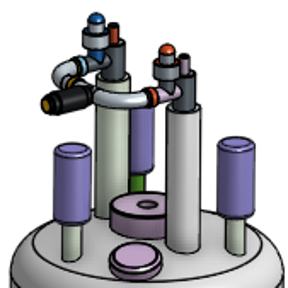Welcome to the Onshape forum! Ask questions and join in the discussions about everything Onshape.
First time visiting? Here are some places to start:- Looking for a certain topic? Check out the categories filter or use Search (upper right).
- Need support? Ask a question to our Community Support category.
- Please submit support tickets for bugs but you can request improvements in the Product Feedback category.
- Be respectful, on topic and if you see a problem, Flag it.
If you would like to contact our Community Manager personally, feel free to send a private message or an email.
Bug in transform with mate connectors?
 lni64
OS Professional Posts: 38 ✭✭
lni64
OS Professional Posts: 38 ✭✭
It seems like the mate connector of the transformed part does not move with the part.
Mate connector defined on bearing
After moving the bearing, mate connector of bearing stays where it is:
Regards
Lutz
Mate connector defined on bearing


After moving the bearing, mate connector of bearing stays where it is:

Regards
Lutz
1
Comments
Suppose a datum plane is created coinciding to the part and part is transformed in next feature, earlier created datum plane with respect to the part remains at the same position where it was created before. So, I guess transform by mate connector is working in similar way.
@shashank_aarya, I am not concerned with whether the mate connectors move with the part, only that they cannot be hidden. Without the ability to hide them, I cannot achieve a clean presentation of the model on the screen.
I agree: the inability to hide definitely needs to be addressed (and because of that, I'm confident it will be).
What i'm trying now:
1. Import component from vendor's file
2. Edit component in its part studio, adding mate connectors at useful landmarks
3. add mate connector to frame where component should attach
4. Import component into Frame part studio
5. Place component in relation to frame using Transform by Mate Connector
6. Continue to build Frame up to other landmarks on part.
But I can't do step 3 because the mate connectors I place in step 2 don't transition...
I ran into all these issues last week as well.
Since a mate connector always has an owner part .... it seems like it should move with the transformed part in the derived document.
A vote to prioritize the hide show fix and the mate connector fix.
Here is the scenario that I think is really important...
Create two parts in a part studio with mate connectors as key assembly target points...
Insert the two parts as separate derived features into a new part studio....
Translate the circular pad and then mate the hole in the square pad to the hole in the circular pad....but you can't because mate connectors have not moved.